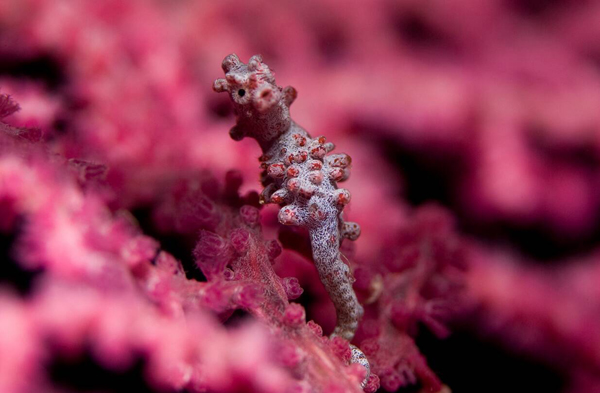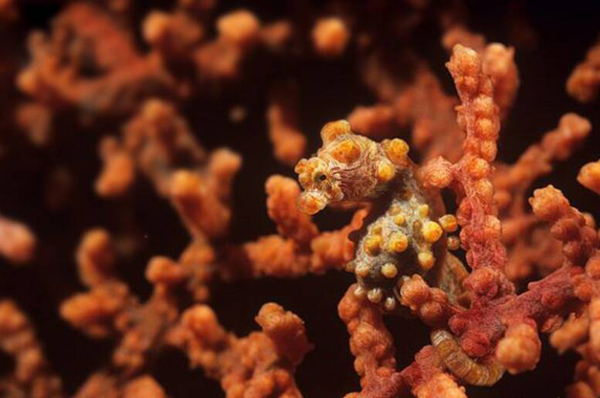Bargibant's Seahorse (scientific name: Hippocampus bargibanti), also known as Bargibant's Seahorse, Gorgonian Seahorse, Pygmy Seahorse in foreign languages, is an animal of the Syngnathidae family and the genus Hippocampus.

Georges Bargibant, who works at an aquarium in New Riolidonia, Oceania, discovered the first seahorse in the world, so the seahorse was named "Bargibant's pygmy seahorse" after his surname.
Pygmy seahorses are usually found in pairs or groups on gorgonians, with the highest record of 28 pygmy seahorses found on a single gorgonian coral. Pygmy seahorses have excellent camouflage ability. The bulbous tubercles covering their bodies are very similar in color and shape to the polyps of their main species, gorgonians, and their bodies are similar to the stems of gorgonians, making them difficult to detect. Little is known about the diet of Pygmy seahorses, but they probably eat small crustaceans like other seahorses.

It is the male, not the female, that is pregnant. Reproduction occurs year-round. The female lays her eggs in a brood pouch on the male's body. The male fertilizes the eggs and carries them until they hatch, a gestation period of about two weeks. A male pygmy seahorse once gave birth to 34 young in one litter. The hatchlings resemble miniature versions of the adult seahorses and are left to grow independently from hatching without further parental care.
One local study of the population density of P. barbatelli has been completed. Along 20 km of southeastern Sulawesi coastline, 0.34 ± 0.20 individuals were observed per 200 m2 (Smith et al., 2012). P. barbatelli may decline if ocean acidification or warming affects their host corals, but further research is needed to determine the overall population size and abundance trends of P. barbatelli.

Australia's Pygmy Seahorses are listed in the Australian Wildlife Conservation Act, so an export permit is required to catch and trade them, and they are only granted to Pygmy Seahorses that have approved management plans or are bred in captivity.
Due to its rare and attractive color, the Pygmy Seahorse is likely to be traded or collected as an aquarium pet.
Listed in the IUCN Red List of Threatened Species (2016 ver 3.1) - Data Deficient (DD).
Listed in Appendix II of the Convention on International Trade in Endangered Species of Wild Fauna and Flora (CITES).
Protect wildlife and stop eating game.
Maintaining ecological balance is everyone's responsibility!